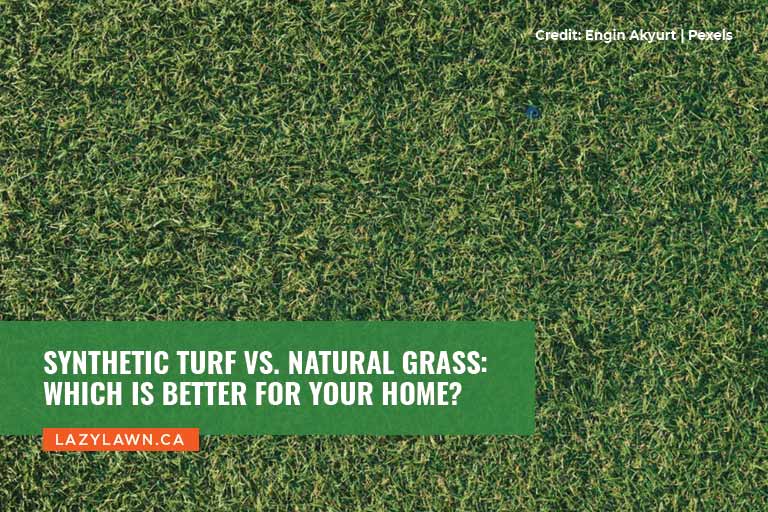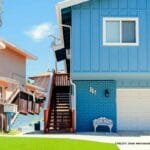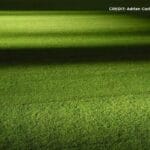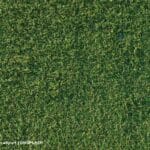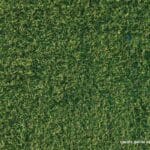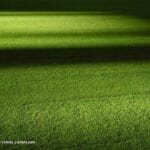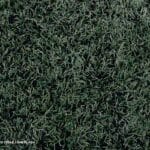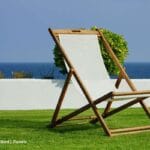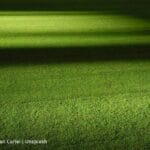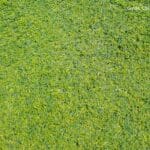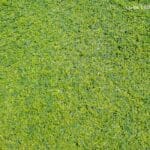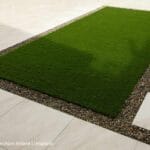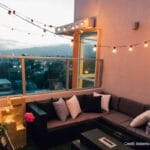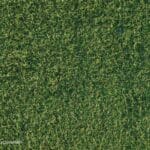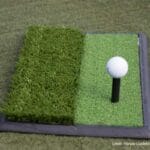When it comes to enhancing the aesthetic appeal and functionality of your outdoor space, the choice between synthetic turf and natural grass is a significant decision. Both options come with their unique set of advantages and drawbacks, making the choice dependent on various factors including personal preferences, environmental considerations, and maintenance requirements. In this article, we’ll delve into the key differences between natural grass and synthetic grass for Kelowna homeowners, helping you determine which is better for your home.
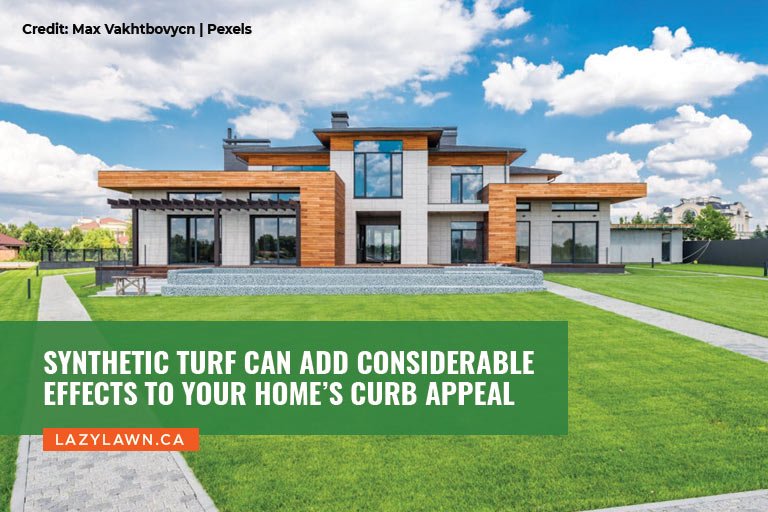
Aesthetics and Visual Appeal
One of the primary considerations for homeowners is the visual appeal of their lawn. Natural grass has an undeniable charm, with its lush, green appearance that changes with the seasons. The subtle imperfections, varying shades of green, and the way it responds to sunlight all contribute to its natural beauty. For many, the sight of a well-maintained natural lawn brings a sense of serenity and connection to nature.
On the other hand, synthetic turf offers a consistently green and uniform appearance throughout the year, regardless of weather conditions. Advancements in technology have made synthetic grass remarkably realistic, often making it difficult to distinguish from the real thing at a glance. However, for some, the uniformity of synthetic turf may lack the natural charm that comes with real grass, particularly the seasonal changes and the natural wear and tear that add character to a living lawn.
Environmental Considerations
Environmental impact is a crucial factor in the debate between synthetic turf and natural grass. Natural grass is a living organism that plays a role in the ecosystem, providing habitat for various insects and small animals. It also contributes to air purification by absorbing carbon dioxide and releasing oxygen, while simultaneously helping to cool the surrounding area through the process of evapotranspiration.
However, maintaining a natural grass lawn also requires substantial water use, especially in arid climates, contributing to water scarcity issues. Indeed, in Vancouver, for example, brown lawns have increasingly become a common sight due to water scarcity. Additionally, the use of fertilizers, pesticides, and herbicides necessary to maintain a pristine natural lawn can lead to chemical runoff, polluting nearby water bodies and harming wildlife.
Synthetic turf, while not requiring water or chemicals for maintenance, has its own environmental concerns. While synthetic turf does not contribute to air purification or support local ecosystems once installed, there are considerations to keep in mind. Namely, when synthetic turf reaches the end of its lifespan, take care to dispose of it properly, as it is not biodegradable and can contribute to landfill waste.
Maintenance Requirements
The level of maintenance required is another significant factor when choosing between synthetic turf and natural grass. Natural grass lawns demand regular care, including mowing, watering, fertilizing, and weeding. This maintenance can be time-consuming and costly, especially if you hire professional lawn care services. However, for those who enjoy gardening and lawn care, tending to a natural grass lawn can be a rewarding and therapeutic activity.
Synthetic turf, by contrast, requires far less maintenance. It does not need watering, mowing, or fertilizing, making it a low-maintenance option for homeowners who prefer a hassle-free lawn. Occasionally cleaning your synthetic turf to remove debris and periodic brushing to keep the fibres upright are typically all that is needed to keep it looking its best. This can be a significant advantage for those with busy lifestyles or those who prefer to spend their time on other activities.
Longevity and Durability
The lifespan of your lawn is another important consideration. Natural grass, while long-lasting, is susceptible to wear and tear, especially in high-traffic areas. Over time, you may notice patches where the grass has thinned or become discoloured due to heavy use, poor soil conditions, or exposure to extreme weather. Additionally, natural grass can be prone to diseases, pests, and fungal infections, which can further affect its appearance and health.
Synthetic turf, in contrast, is designed to be durable and withstand heavy use. It is not affected by weather conditions, making it a resilient choice for areas that experience extreme temperatures or heavy rainfall. High-quality synthetic turf can last anywhere from 10 to 20 years, depending on the level of use and the quality of the installation. This durability makes synthetic turf an attractive option for homeowners looking for a long-term solution that will retain its appearance with minimal effort.
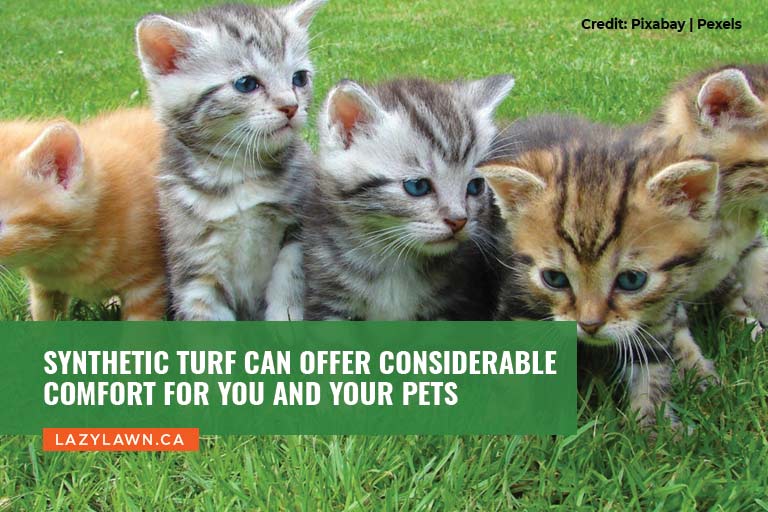
Comfort and Safety
Comfort and safety are key factors, particularly for families with children or pets. Natural grass provides a soft, cushioned surface that is gentle underfoot and ideal for outdoor activities. The natural cooling effect of grass also makes it comfortable to walk on, even on hot days. However, natural grass can become slippery when wet, increasing the risk of falls, and it can also harbour pests such as ticks and fleas.
Synthetic turf, while not as soft as natural grass, has improved considerably in terms of comfort. Modern synthetic turf is designed to mimic the feel of natural grass and often includes cushioning layers to enhance comfort underfoot. It also provides a consistent surface that is less likely to become muddy or slippery. However, synthetic turf can become very hot under direct sunlight, making it uncomfortable to walk on during peak summer temperatures. Additionally, some people may have concerns about the safety of the materials used in synthetic turf, particularly with regard to potential chemical exposure.
Cost Considerations
Cost is always a significant factor when deciding between synthetic turf and natural grass. The initial cost of installing synthetic turf is typically higher than establishing a natural grass lawn. However, synthetic turf’s lower maintenance requirements can result in cost savings over time, as you won’t need to invest in lawn care products, water, or professional maintenance services.
Natural grass, while cheaper to install, can incur higher ongoing costs due to the need for regular watering, mowing, and treatment. If you choose to hire a professional lawn care service, these costs can add up over the years, making natural grass potentially more expensive in the long run.
The decision between synthetic turf and natural grass ultimately depends on your personal preferences, lifestyle, and environmental values. If you value a natural, living landscape that changes with the seasons and contributes to the local ecosystem, natural grass may be the better choice for you. However, if you prefer a low-maintenance, durable lawn that remains green and uniform year-round, Kelowna synthetic turf could be the ideal solution.
Consider the long-term implications of your choice, including maintenance, environmental impact, and cost, before making your decision. Both synthetic turf and natural grass have their unique advantages and disadvantages, and the best choice for your home will depend on what you prioritize in a lawn. Whether you opt for the traditional appeal of natural grass or the modern convenience of synthetic turf, ensuring your outdoor space reflects your lifestyle and values will bring long-term satisfaction.
When you need synthetic turf to boost your curb appeal without adding to your water and maintenance costs, Lazy Lawn is here to help. We provide a wide range of synthetic turf to match your home’s theme and your own tastes. When you need artificial turf that looks and feels like natural grass, give us a call at (888) 622-5296 now.

